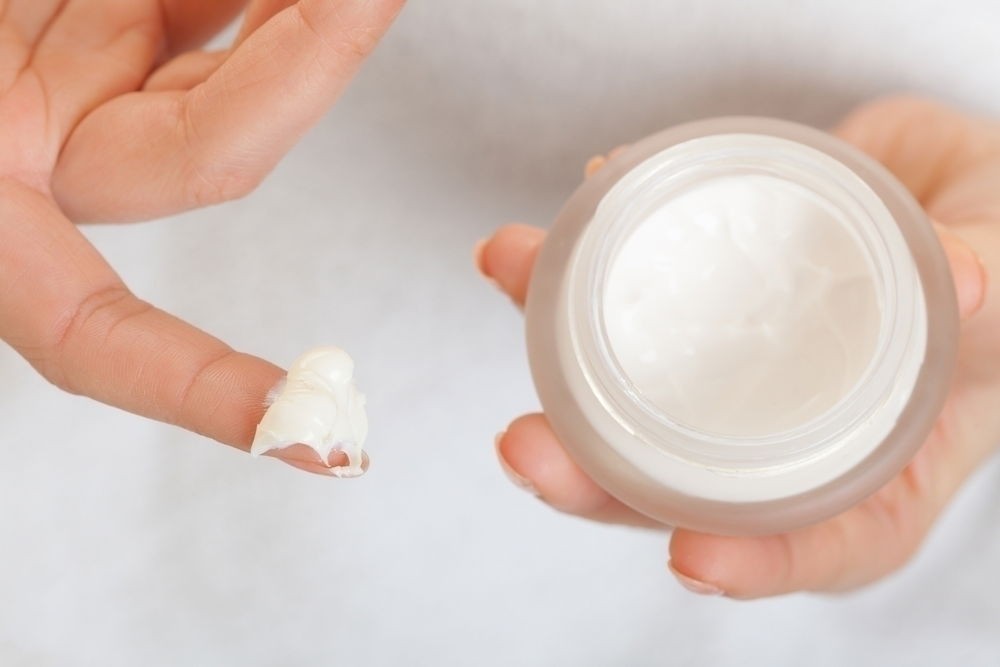Dark inner thighs are a common skin concern that many people experience. It’s characterized by an area of skin on the upper, inner thighs that is noticeably darker than your natural skin tone. While usually harmless from a medical standpoint, dark inner thighs can be a source of self-consciousness for some. Understanding why this happens and what you can do about it is the first step towards addressing this skin issue.
Understanding Dark Inner Thighs: What’s Happening?
The darkening of the skin, medically known as hyperpigmentation, is the root cause of dark inner thighs. Hyperpigmentation occurs when the skin produces more melanin, the pigment that gives skin its color. This excess melanin deposition can be triggered by a variety of factors, leading to the development of darker patches on the inner thighs. It’s important to note that skin darkening is a natural response to irritation or changes within the body.
Common Causes of Dark Inner Thighs
Several everyday factors can contribute to the increased melanin production in the inner thigh area. Identifying the specific cause is crucial for effective management and prevention.
Friction and Chafing
One of the most frequent culprits behind dark inner thighs is friction. The constant rubbing of your thighs against each other, especially during activities like walking, running, or exercise, can irritate the skin. This repeated friction stimulates melanocytes, the cells responsible for melanin production, leading to hyperpigmentation in the affected area. This is particularly common in individuals with a body type where thighs naturally rub together.
Tight Clothing
Similar to friction from skin-on-skin contact, wearing tight clothing, especially garments made from non-breathable fabrics, can also create friction and trap heat and moisture. This confined environment can irritate the delicate skin of the inner thighs, triggering an inflammatory response and subsequent darkening. Regularly wearing tight jeans, leggings, or shapewear can contribute to this issue.
Hormonal Changes
Hormonal fluctuations within the body can significantly impact skin pigmentation. Conditions like pregnancy, polycystic ovary syndrome (PCOS), and certain endocrine disorders can cause hormonal imbalances that lead to increased melanin production. Hormonal changes can make the skin more sensitive and prone to hyperpigmentation in areas like the inner thighs, armpits, and neck.
Shaving and Hair Removal
Methods of hair removal like shaving, waxing, or using depilatory creams can sometimes irritate the skin and cause post-inflammatory hyperpigmentation. Shaving, in particular, can cause micro-abrasions and ingrown hairs, leading to inflammation. Depilatory creams contain chemicals that, while effective at dissolving hair, can also be harsh on sensitive skin, potentially leading to irritation and darkening over time.
Post-Inflammatory Hyperpigmentation
Any inflammatory skin condition in the inner thigh area, such as eczema, psoriasis, or even insect bites, can result in post-inflammatory hyperpigmentation (PIH). When the skin is injured or inflamed, it naturally responds by producing more melanin as part of the healing process. This can leave behind darker patches of skin even after the initial inflammation subsides.
Certain Medical Conditions
Beyond hormonal imbalances, certain medical conditions like diabetes and acanthosis nigricans can also be associated with dark inner thighs. Acanthosis nigricans is a skin condition characterized by dark, velvety patches in body folds and creases, including the inner thighs. It’s often linked to insulin resistance and can be an indicator of pre-diabetes or diabetes.
Sun Exposure
Although often overlooked for the inner thighs, sun exposure can also contribute to darkening. While this area might not be as directly exposed as the face or arms, cumulative sun exposure over time can stimulate melanin production in any area of the skin, including the inner thighs, especially if they are not adequately protected by clothing or sunscreen.
 Illustration of dark patches on the inner thighs
Illustration of dark patches on the inner thighs
How to Lighten Dark Inner Thighs: Effective Treatments
Fortunately, there are various approaches to lighten dark inner thighs and improve skin tone. Treatments range from over-the-counter options to professional procedures, and the best approach will depend on the severity of the darkening and individual preferences.
Over-the-Counter Lightening Creams
Numerous over-the-counter (OTC) creams and lotions are formulated to lighten hyperpigmentation. These products typically contain active ingredients that inhibit melanin production or promote skin exfoliation. Common ingredients to look for include:
- Kojic Acid: A natural skin-lightening agent derived from fungi. It works by inhibiting tyrosinase, an enzyme essential for melanin production.
- Azelaic Acid: This ingredient has multiple benefits, including reducing melanin production, fighting inflammation, and promoting cell turnover. It’s often well-tolerated and can be effective for mild to moderate hyperpigmentation.
- Niacinamide (Vitamin B3): Niacinamide is a potent antioxidant and skin-brightening agent. It helps to reduce melanin transfer to the surface of the skin and improve overall skin tone.
- Alpha Arbutin: Similar to hydroquinone but gentler, alpha arbutin is a derivative of hydroquinone that inhibits melanin production.
When using OTC lightening creams, it’s crucial to follow product instructions carefully and perform a patch test on a small area of skin to check for any adverse reactions. Consistency is key, and it may take several weeks to see noticeable results.
Prescription Treatments
For more stubborn or severe cases of dark inner thighs, a dermatologist may prescribe stronger lightening treatments. Prescription options can include:
- Hydroquinone: A potent skin-lightening agent that works by inhibiting tyrosinase. Prescription-strength hydroquinone creams are more concentrated than OTC versions and can be very effective. However, they should be used under medical supervision due to potential side effects like skin irritation and ochronosis (paradoxical skin darkening with prolonged use).
- Retinoids (Tretinoin, Retinol): Prescription retinoids like tretinoin are vitamin A derivatives that promote cell turnover, exfoliate the skin, and can help to disperse melanin. They can be used alone or in combination with other lightening agents.
- Combination Creams: Dermatologists may prescribe combination creams that contain multiple active ingredients like hydroquinone, tretinoin, and a mild corticosteroid to enhance lightening effects and reduce irritation.
Prescription treatments require a dermatologist’s evaluation to determine suitability and ensure safe and effective use.
In-Clinic Cosmetic Procedures
For faster and more dramatic results, various in-clinic cosmetic procedures are available to address dark inner thighs. These procedures are typically performed by dermatologists or qualified skincare professionals:
- Chemical Peels: Chemical peels involve applying a chemical solution to the skin to exfoliate the outer layers and promote cell renewal. Different types of peels, such as glycolic acid, salicylic acid, or TCA peels, can be used to target hyperpigmentation.
- Laser Treatments: Laser therapies like Q-switched Nd:YAG lasers can effectively break down melanin pigment in the skin, leading to lightening. Laser treatments are generally more expensive but can provide quicker results.
- Microdermabrasion: This procedure uses a minimally abrasive instrument to gently exfoliate the skin’s surface, improving skin texture and reducing mild hyperpigmentation.
- Micro-needling: Micro-needling creates tiny punctures in the skin, stimulating collagen production and enhancing the penetration of topical lightening agents.
Cosmetic procedures should be performed by experienced professionals, and it’s essential to discuss potential risks and benefits beforehand.
Home Remedies (With Caution)
Some home remedies are often suggested for lightening dark inner thighs, but they should be approached with caution and used as complementary approaches rather than primary treatments.
- Exfoliation: Gentle exfoliation with scrubs containing ingredients like oatmeal or sugar can help remove dead skin cells and improve skin tone over time. However, avoid harsh scrubbing, which can further irritate the skin.
- Moisturizing: Keeping the inner thighs well-moisturized can create a barrier against friction and irritation. Choose fragrance-free, hypoallergenic moisturizers.
- Aloe Vera: Aloe vera gel has soothing and anti-inflammatory properties that may help calm irritated skin and potentially reduce hyperpigmentation.
- Lemon Juice (Use with Extreme Caution): While lemon juice contains vitamin C, a natural brightening agent, it is also highly acidic and can cause significant skin irritation, dryness, and even worsen hyperpigmentation in some individuals. It’s generally best to avoid using lemon juice on the skin, especially in sensitive areas like the inner thighs.
Home remedies alone may not be sufficient to significantly lighten dark inner thighs, and they are not a substitute for evidence-based treatments.
Prevention Tips for Dark Inner Thighs
Preventing dark inner thighs involves minimizing the factors that contribute to hyperpigmentation. Adopting these preventive measures can help maintain an even skin tone:
- Wear Loose-Fitting Clothing: Opt for breathable, loose-fitting clothing, especially during exercise or in hot weather, to reduce friction and allow air circulation.
- Use Anti-Chafing Products: If you experience thigh chafing, use anti-chafing shorts, balms, or powders to create a barrier and minimize friction.
- Maintain a Healthy Weight: Weight management can reduce skin-on-skin friction, particularly in the thigh area.
- Proper Shaving Technique: If shaving, use a sharp razor, shaving cream, and shave in the direction of hair growth to minimize irritation. Consider alternative hair removal methods like waxing or laser hair removal for long-term solutions.
- Sun Protection: Apply broad-spectrum sunscreen to the inner thighs when exposed to the sun, even indirectly.
- Treat Skin Conditions Promptly: Address any inflammatory skin conditions like eczema or infections promptly to prevent post-inflammatory hyperpigmentation.
Conclusion
Dark inner thighs are a common concern with various underlying causes, primarily related to hyperpigmentation triggered by friction, hormonal changes, and skin irritation. While generally not a medical problem, effective treatments are available to lighten the skin and improve appearance. Over-the-counter creams, prescription medications, and in-clinic procedures offer different levels of intervention. Prevention through lifestyle adjustments and proper skincare is also crucial. If you are concerned about dark inner thighs or unsure about the best treatment approach, consulting a dermatologist is recommended for personalized advice and guidance.
